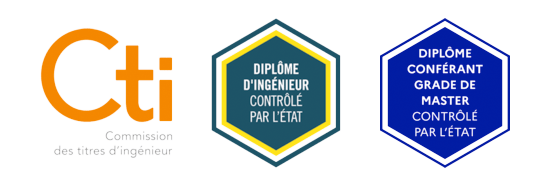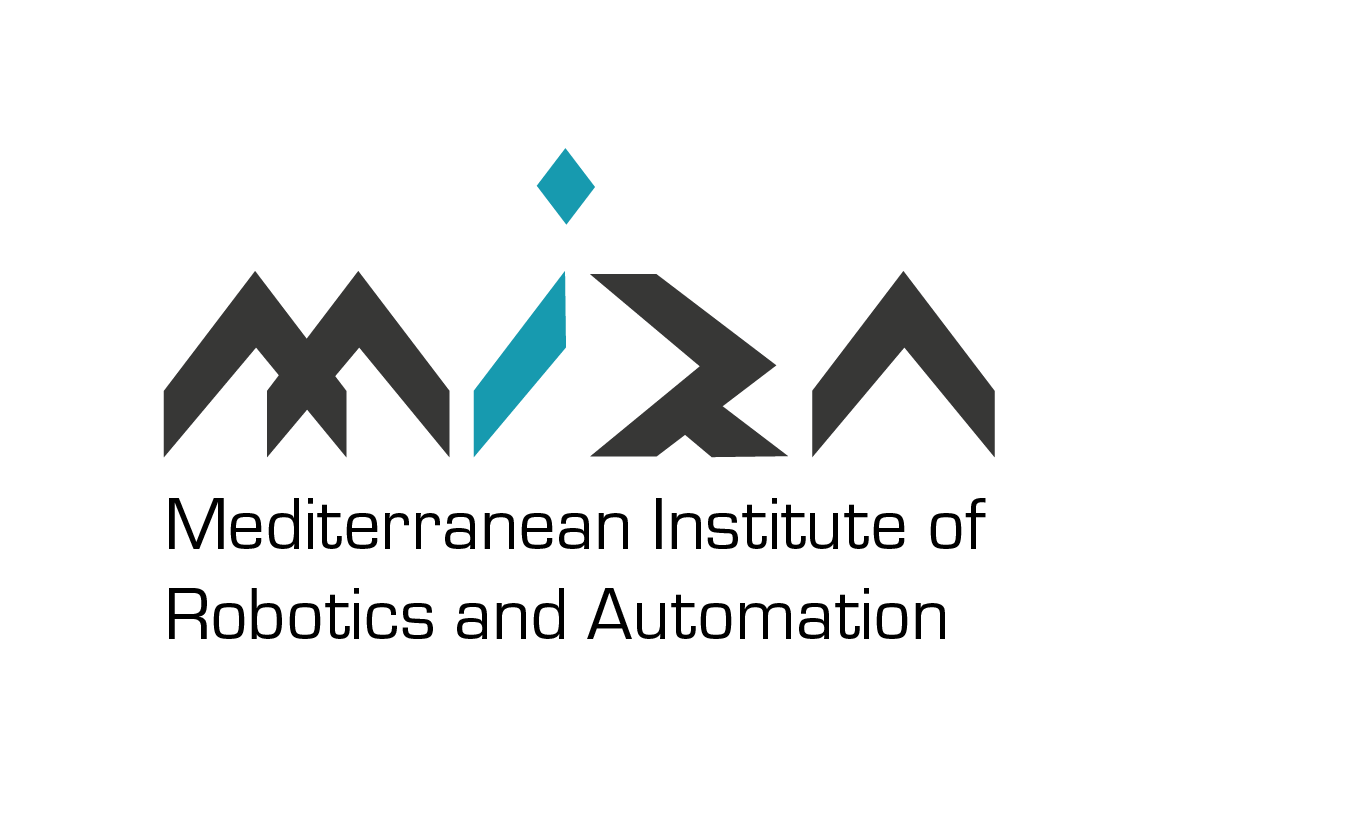
ROBOTICS AND COMPUTER ENGINEERING SCHOOL

MIRA, accredited engineering school of Aflokkat Group teach robotics and IT, with a strong
focus on artificial intelligence. The school is located in Ajaccio, Corsica, France.
Acquire knowledge and operational skills in designing and developing autonomous and
collaborative robotic systems. Enter forward-looking fields such as industry, IT, energy, agri-
food, agriculture, construction, and mechanics.
THE MIRA ENGINEER
SPECIALIZED IN ROBOTICS AND COMPUTER SCIENCE
The scientific courses focus on robotics, computer development, artificial intelligence and
engineering sciences. With these well-established skills, you can choose to major in either
Human-Centered Robotics (HCR) or AI for Mobile Robots (AIMR).
TRILINGUAL
With mastery of three modern languages (English, French + a third language of your choice),
you will be able to collaborate easily with multicultural teams and access international
professional opportunities.
CONNECTED TO SOCIETAL ISSUES
In addition to strong technical skills, your ability to integrate ethical and sustainable
technological solutions is driven by your awareness of societal issues. The program also aims
to enhance your project management, human and entrepreneurial skills.
INTEGRATED INTO AN INNOVATING ECO-SYSTEM
Access a pro-active network and create job opportunities by working alongside local socio-
economic actors involved in the MIRA project.
ENGINEER PROGRAM
A 5-YEAR ENGINEERING CURRICULUM, DIVIDED INTO 2 CYCLES
01 Preparatory Cycle (Y1 and Y2)
These first two years focus on acquiring the fundamentals of Sciences and in the
professional world. This cycle ends with a one-month internship in a company to apply the
acquired knowledge.
02 Engineering Skills Cycle (Y3 to Y5)
The following three years are dedicated to robotics and computer science, and to the
development of cross-disciplinary skills in management and entrepreneurship, and the
practice of modern languages.
This school curriculum is structured around 5 teaching courses :
- UE1: Computer Science and Mathematics
- UE2: Physics and Engineering Sciences
- UE3: Robotics
- UE4: Business Sciences and Entrepreneurship
- UE5: Humanities and Social Sciences
On the fourth year, major in HCR or AIMR:
Human Centered Robotics (HCR) :
Social Robotics
- Signal processing: physiological signals
- Advanced Human Machine Interface
- Cobotics
- Social robotics
Or
Artificial Intelligence for Mobile Robots (AIMR):
- Bio-inspired robotics
- Signal processing: real time and Kalman filter
- Autonomous navigation over rough terrain
- Swarm robotics
PROGRAM DETAILS
UE1: COMPUTER SCIENCE AND MATHEMATICS
>Acquire the fundamentals of algebra, trigonometry and analysis.
> Develop simple programs in the C language.
> Recognize the components of a computer network.
UE2 : PHYSICS AND ENGINEERING SCIENCES
> Analyze a consumer need in the field of robotics, describe an existing system, model and
analyze it.
> Acquire the fundamentals of point mechanics, thermodynamics and electrostatics to
understand the multi-physicality of robotics.
UE3: ROBOTICS
> Describe and analyze a commercial robotic system. Program commercial robots using graphical languages.
> Acquire the fundamentals of electrokinetics.
UE4: BUSINESS SCIENCE AND ENTREPRENEURSHIP
> Collaborate on a year-long project using project management methods.
UE5: HUMAN AND SOCIAL SCIENCES
> Listen and express orally and in writing clearly in one’s mother tongue and two foreign languages.
> Question industrial practices through the prism of sustainable development.
UE1: COMPUTER SCIENCE AND MATHEMATICS
> Apply the fundamentals of algebra, analysis and geometry in general situations.
> Develop advanced programs in procedural and object languages (C, C# and Python).
> Design a simple Web application with its associated languages (PHP, HTML, CSS,
Javascript).
UE2 : PHYSICS AND ENGINEERING SCIENCES
> Acquire the fundamentals of wave physics (mechanics, acoustics, electromagnetics).
> Question the principles of modern physics, in particular quantum physics.
UE3: ROBOTICS
> Mathematically represent robotic systems and use this representation to program them efficiently.
> Acquire the fundamentals of solid mechanics to analyze a dynamic system.
UE4: BUSINESS SCIENCES AND ENTREPRENEURSHIP
> Implement an entrepreneurial approach during a collaborative project.
> Analyze the business world during a work placement.
UE5: HUMAN AND SOCIAL SCIENCES
> Listen and express clearly in speaking and in writing in mothertongue and at least one
foreign language.
> Question society through the prism of ethics.
UE1: COMPUTER SCIENCE AND MATHEMATICS
> Develop web and mobile applications according to best practices (design pattern).
> Extract data from large databases or sensors and adapt them for use in artificial
intelligence.
UE2 : PHYSICS AND ENGINEERING SCIENCES
> Design simple prototypes using rapid manufacturing methods (3D printing, laser cutting, milling and turning), and assembly.
> Optimize controller parameters for the servo-control of a simple system.
UE3: ROBOTICS
> Design 3D components
> Design and program IOT systems.
> Analyze and adjust industrial computer systems.
UE4: BUSINESS SCIENCES AND ENTREPRENEURSHIP
> Acquire fundamentals of business economics and financial management.
> Experience project management.
> Analyze the business world with an internship.
UE5: HUMAN AND SOCIAL SCIENCES
> Develop an argument using the persuasion tools.
> Build a critical mind.
> Be aware of the risks involved in project management.
> Speak at least 3 different languages.
UE1: COMPUTER SCIENCE AND MATHEMATICS
> Analyze images through algorithms for artificial intelligence applications.
> Develop virtual reality and augmented reality applications.
> Design an artificial intelligence application using machine learning and neural network
techniques.
> Question modern computing methods, particularly quantum computing.
UE2 : PHYSICS AND ENGINEERING SCIENCES
> Design electronic boards using modern prototyping techniques.
> Analyze and process an analog signal with a computer.
UE3: ROBOTICS
>Identify and analyze interactions between humans and machines.
> Design human/machine interfaces centered on humans.
> Question robotic systems through the prism of ecology and apprehend low-techs.
> Design autonomous robotic systems incorporating artificial intelligence.
> AIMR :Determine bio-inspiration in known robotic systems.
> HCR : Determine the factors enabling robotics in social interaction.
UE4: BUSINESS SCIENCES AND ENTREPRENEURSHIP
> Build an entrepreneurial culture.
> Experience entrepreneurship.
> Identify eco-design practices.
UE5: HUMAN AND SOCIAL SCIENCES
> Develop a research culture.
> Experience team management.
> Develop a culture of quality and its principles.
> Speak at least 3 different languages (2 at least in business language)
UE1: COMPUTER SCIENCE AND MATHEMATICS
> Build complex Web applications involving big data architecture.
> Design artificial intelligence applications that can understand natural language.
> Adapt the learning of a neural network so that computation is performed on a graphics card.
UE2 : PHYSICS AND ENGINEERING SCIENCES
> Model and dimension mechanical parts using finite element techniques.
UE3: ROBOTICS
> AIMR : Design and control legged robots.
> AIMR : Control swarms of robots.
> HCR : Design human/machine interfaces stimulating several senses simultaneously
(multimodal interaction).
> HCR : Analyze and control cobotic robots.
UE4: BUSINESS SCIENCES AND ENTREPRENEURSHIP
> Collaborate on a large-scale project.
> Evaluating peers and self.
UE5: HUMAN AND SOCIAL SCIENCES
> Analyze a situation using a systemic approach.
> Produce a solution based on a systems approach.
> Develop a culture of innovation.
> Speak at least 3 different languages (2 at least in business language) professionnelle dans au moins deux langues.
STUDENT LIFE AT MIRA
A DYNAMIC STUDENT UNION
The student union, represented by “A Skalinata” association is a place for interaction and
support. Throughout the year, embrace cultural and sporting events that encourage
encounters and team-spirit within the student community.
HIGHLIGHTS OF THE ACADEMIC YEAR
The 24h Innovation Challenge® is the highlight of MIRA’s student life.
Happening once a year, this competition focuses on creativity and innovation : build a multi-
disciplinary team with students from different schools and universities, and imagine an
innovative solution to a problem posed by local companies in only 24 hours!
Aflokkat organization also provide technical and financial support to students wishing to take part in scientific and technological competitions, such as ActInSpace or the Bordeaux
Robocup.
CREATION DEDICATED SPACES OPEN TO ALL STUDENTS
MIRA FabLab is the best place to innovate and collaborate !
Turn your ideas and projects into reality : 3D printer, laser cutter, 4-axis CNC, PCB
workshop, IOT and Arduino equipment, rapid prototyping, VR headsets, haptic arms, drones,
rovers, etc.
Also enjoy the Learning Center 24/7, a place for research and learning.
SERVICES TO MAKE EVERYDAY LIFE EASIER
As a MIRA student, you can access all the city’s multimedia libraries and museums for free,
and get special rates on cultural and sporting activities.
You can also enjoy a student catering service and find accommodation at reduced prices.
FABLAB
A space for innovation and creation, open to all our students
Learning center
Open 24/7 for exchange and collaboration
SPORTS ACTIVITIES
Integrated into the curriculum and supported by numerous associative partnerships
CULTURE
Free access to the city's museums, multimedia libraries and libraries, and art workshops organized by partner associations.
TEACHING METHODS
STUDENT-CENTERED TEACHING METHODS
At MIRA, our teaching methods are specifically adapted to the on-going cycle: during the first
year, our courses provide basic knowledge, with a special care to empowering the student.
For this, you’ll be supported in your working methods and practice during the seminar,
experimental studieslab work and project phases.
PROJECT-BASED LEARNING
MIRA benefits from Aflokkat’s expertise in the use of active teaching methods and cross-
disciplinary role-playing exercises through cross-disciplinary projects.
As a student-engineer, you will regularly face problem-based learning during the first two
years of study (Semester 2 project, mini-company, work placement, etc.).
These extensive projects will enable you to mobilize several skills to achieve your goal, and
discover collaborative work. Other concise projects are conducted in each course to apply what you’ve learned in a particular subject area.
A CROSS-DISCIPLINARY APPROACH
In the following six semesters, you will enter the engineering skills cycle, which encourages
cross-disciplinary work situations. Over these three years, you will carry out 20 projects of
varying scope, mainly in Robotics and Computer Sciences. These 20 projects are common
to both the FISE and FISA tracks.
In addition to these projects, you will also simulate a start-up creation, from production to
marketing and sales strategy.
The final project (final year, semester #9) is submitted by the school’s partner companies:
you will have to imagine and develop an entire solution, as a if you were a research unit.
PRACTICAL INFO
PREREQUISITES | ADMISSION
To enroll in the MIRA engineering program, students in the last year or high school or STI2D
high school years must select MIRA as one of their choices on Parcoursup (french students) or apply directly on this website (foreign students)
It is strongly recommended to have a scientific background of 2 years in at least 2 courses.
The MIRA engineering program can be taken as a student for 5 years, or as a student for the
first two years, then as an apprentice from the third year onwards.
ASSESSMENT AND GRADUATION
At MIRA, promotion to the next year is decided by a jury, which takes into account the results of continuous assessment during the school year. The rules and regulations detailing the procedures for promotion to the next year are given to each student on entry to the
program.
To obtain the title of engineer, students must acquire 180 ECTS credits, validate and defend their end-of-study project, achieve a minimum level of English language proficiency (TOEIC 785 – level B2) and complete an international exchange program of at least 3 months.


